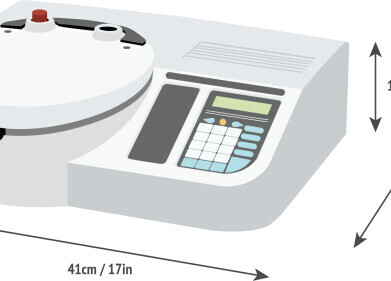Chromatography
Why Have Scientists Created a COVID-19 Replica?
Sep 05 2020
In the latest attempt to understand the novel coronavirus, researchers at Washington University School of Medicine in St. Louis have created a lab-made version that imitates the infection path and symptoms of the COVID-19 disease. Safer to work with than the real thing, the team say it will help in the search for both a vaccine and treatment.
The findings were reported in the journal Cell Host & Microbe, with co-senior author Sean Whelan explaining how the team developed a lab virus that infiltrates cells and interacts with antibodies in the same way as the SARS-Cov-2 virus, without the risk of potentially lethal infection. This significantly increases the pool of scientists authorised to work with the virus and eliminates the need for high-level personal protective equipment and biosafety facilities.
Genetically modifying SARS-Cov-2
To minimise the risk, Whelan and his team developed a hybrid strain of SARS-Cov-2, using vesicular stomatitis virus (VSV) as a cornerstone. Utilised in virology labs around the world, VSV is relatively harmless and easy to manipulate. It’s usually seen in animals such as horses, pigs and cows but can sometimes infect humans, causing mild flu-like symptoms that usually last less than a week.
For the hybrid version, the team genetically modified VSV using a single gene extracted from SARS-CoV-2. While the hybrid virus acts in the same way, it’s safe to handle in normal laboratories and doesn’t pose a threat to public health. There’s no need for scientists to wear biohazard suits or work within facilities with sophisticated containment zones and ventilation systems.
Scientists eye antibody-based treatments
Already, the ground-breaking study has received global attention. “I've never had this many requests for a scientific material in such a short period of time," says Whelan, head of the Department of Molecular Microbiology at the Washington University School of Medicine. “We've distributed the virus to researchers in Argentina, Brazil, Mexico, Canada and, of course, all over the U.S. We have requests pending from the U.K. and Germany. Even before we published, people heard that we were working on this and started requesting the material.”
Moving forward, co-senior author Michael S. Diamond, MD, PhD says the hybrid virus could be used to help develop antibody-based treatments for COVID-19. The genetically modified version could also help test and fast-track experimental vaccines. “Humans certainly develop antibodies against other SARS-CoV-2 proteins, but it's the antibodies against spike that seem to be most important for protection,” adds Whelan. “So as long as a virus has the spike protein, it looks to the human immune system like SARS-CoV-2, for all intents and purposes.”
Want to know more about the latest laboratory breakthroughs? ‘Biphenyl Modified Silica Stabilised by Bulky Substituents - A New Stationary Phase for HPLC’ introduces NUCLEOSHELL® Biphenyl, a new generation of biphenyl modified core shell silica developed by MACHEREY NAGEL GmbH
Digital Edition
Lab Asia Dec 2025
December 2025
Chromatography Articles- Cutting-edge sample preparation tools help laboratories to stay ahead of the curveMass Spectrometry & Spectroscopy Articles- Unlocking the complexity of metabolomics: Pushi...
View all digital editions
Events
Jan 21 2026 Tokyo, Japan
Jan 28 2026 Tokyo, Japan
Jan 29 2026 New Delhi, India
Feb 07 2026 Boston, MA, USA
Asia Pharma Expo/Asia Lab Expo
Feb 12 2026 Dhaka, Bangladesh



















